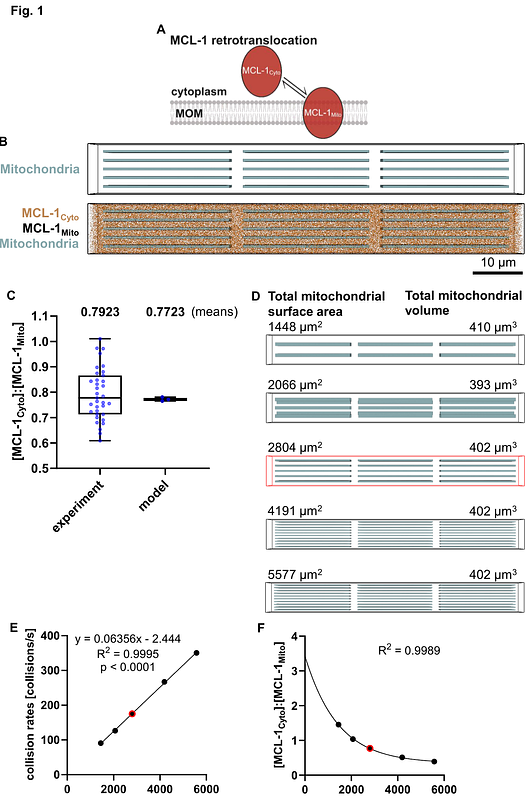Stochasticity contributes to explaining minority and majority MOMP during apoptosis

Stochasticity contributes to explaining minority and majority MOMP during apoptosis
Geiger, J.; Kloetzer, F.; Pollak, N.; Fullstone, G.; Morrison (Rehm), M.
AbstractApoptosis dysfunction is linked to diseases like cancer and neurodegenerative disorders. A key event during apoptosis is mitochondrial outer membrane permeabilization (MOMP), which typically proceeds in a rapid all-or-none fashion. If MOMP occurs only in a subset of mitochondria (minority MOMP), it can be sublethal and contribute to tumorigenesis and cancer progression. Similarly, individual mitochondria escaping widespread MOMP (majority MOMP) can allow cancer cells to recover if apoptosis execution fails. How such heterogeneities in mitochondrial MOMP responsiveness arise within cells is incompletely understood. In particular, whether stochasticity in subcellular protein distributions and interactions across cytosol and mitochondria can realistically contribute to mitochondrial MOMP heterogeneity has not yet been studied. To assess this, we sequentially built and experimentally parameterized a particle-based, cell-sized model including cytosolic and mitochondrial compartments, and that featured a reduced interactome of MCL-1, BAK and tBID. High-performance computing enabled cell-scale simulations of protein distributions and interactions to understand how and under which conditions stochasticity could contribute to heterogeneity in MOMP susceptibility. Our results show that stochastic effects strongly predispose sub-pools of fragmented mitochondria to MOMP under low apoptotic stress. At higher apoptotic stress, fractions of small mitochondria were more likely to escape MOMP than large mitochondria. Retrospective quantification of mitochondrial sizes in experimental scenarios of minority and majority MOMP confirmed these findings. We therefore conclude that stochasticity substantially contributes to enabling small or fragmented mitochondria to undergo MOMP in minority MOMP scenarios and to escape MOMP in majority MOMP scenarios.